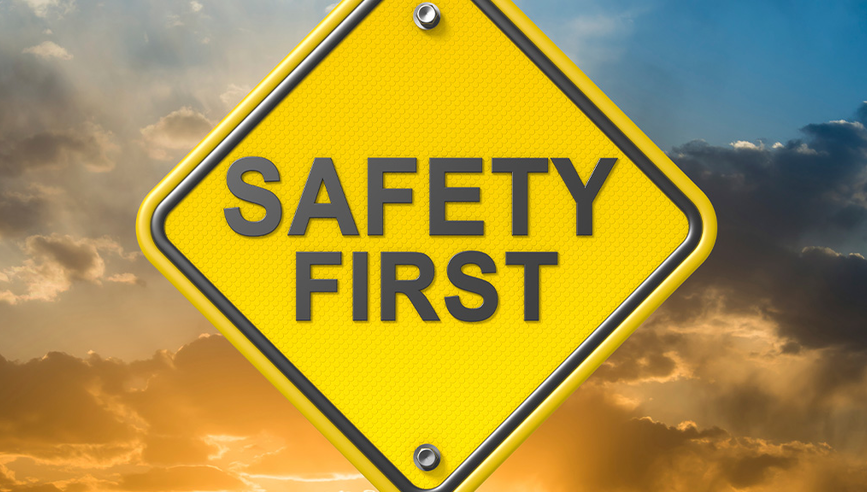Fleet Safety Program Evaluation Guide


Most transportation company owners and managers understand the importance of customer service. They know the ability to deliver exceptional service can make or break a company. Unfortunately, good safety management sometimes gets less consideration, even though accidents and safety violations can threaten the customer service that is so vital to a company’s success.
Why is a safety program important?
Put simply, an effective safety program can help reduce the frequency and severity of accidents, injuries and other types of losses. The reduced operating costs that result can translate into improved profitability. In an industry where even minor accidents can cost thousands of dollars, controlling accidents is vital to a company’s financial success.
A strong safety program can provide other benefits too. It can help lead to higher employee satisfaction and reduced turnover. Controlling losses can improve your success at obtaining affordable insurance. You may also experience fewer problems with fines and penalties for failing to comply with regulatory requirements.
What is a safety program?
A safety program establishes rules and procedures to address the types of loss exposures an organization faces and the regulations it must abide by. It should be consistent with industry best practices.
Putting your safety program in writing can help promote compliance. Making it clear that the program is a priority for management is also important.
Given every organization’s unique makeup, a “one size fits all” approach is not recommended. However, when developing your safety program, consider including the following elements:
- Company safety policies. Have written safety policies been established that communicate management’s commitment to safety and reflect the company’s vision, values and mission? Are these policies widely distributed throughout the company?
- Safety rules. Are workplace safety rules documented and enforced? Some examples of safety rules to add to your handbook include:
-
- Safe vehicle operations.
- Restrictions on the use of mobile devices while driving.
- Vehicle inspection and maintenance requirements.
- Compliance with safety regulations.
- Prohibition on drug and alcohol use.
- Accident reporting procedures.
- Seatbelt use.
Does management show its commitment and support by following these rules?
- Driver hiring. Are formal, written hiring standards in place to support your company’s efforts to hire safe, experienced and qualified drivers? Does management review the motor vehicle records (MVRs) of all prospective drivers? Are they interviewed? Are applicants required to complete an employment application? Does management thoroughly review each applicant’s employment history and contact previous employers? Are prospective drivers given written and road tests to assess their industry knowledge, ability to drive defensively and skill at maneuvering large vehicles? Do hiring standards and procedures comply with applicable regulatory requirements? The Federal Motor Carrier Safety Administration’s Pre-Employment Screening Program (PSP) can offer additional information about a driver’s past record of roadside inspection violations and DOT-recordable crashes. Information about this program is available online at: psp.fmcsa.dot.gov/psp/.
- Orientation and in-service training. Do new drivers receive training on company policies and procedures, safety rules, defensive driving, and applicable regulatory requirements? Do trainers have the experience and qualifications to effectively provide this training?
- Supervision. Does management actively supervise drivers’ daily activities? Are policies on unauthorized vehicle use in place and enforced? Many of today’s onboard safety monitoring systems provide detailed information about vehicle and driver performance. These systems can provide information to help you promote safe driving. Are corrective action procedures in place to address performance issues?
- Performance evaluations. Are performance evaluations conducted periodically to review driver safety performance? Do these evaluations include reviewing the driver’s MVR, accident record and adherence to company safety rules?
- Regulatory compliance. Are managers and drivers knowledgeable about applicable federal, state and local regulations? Have these requirements been incorporated into written company safety rules?
- Periodic safety training. Do drivers receive periodic training on important topics like company safety rules, defensive driving, accident trends, and DOT requirements? Is this training documented?
- Accident response and investigation. Are policies and procedures in place to ensure accidents are investigated promptly? Is the information obtained from accidents used to develop countermeasures aimed at preventing recurrences? Are vehicles supplied with accident report kits and emergency equipment? Are drivers able to take accident scene photographs with a mobile device or disposable camera? Do drivers receive training on accident response, investigation and reporting procedures?
- Vehicle Inspection and Maintenance. Are all vehicles systematically inspected and maintained? Are safeguards in place to help reduce the likelihood that vehicles are operated in an unsafe mechanical condition? Are all vehicle repairs, inspections, and maintenance documented?
While a safety program’s complexity might vary depending on the size of the company and the type of operation, there is no size threshold for determining when a safety program is needed. A safety program is appropriate for companies of all sizes.
For organizations that do not have a formal safety program, now is a good time to start. One strategy for making this process manageable is to break it down into smaller parts. Start by examining each component individually and then detailing the policies and procedures that address specific safety concerns in each area. The topics listed above can help provide a framework for this process.
Once established, management needs to confirm that everyone in the organization understands, and is committed to, all aspects of the safety program. Make sure that each person knows his or her role and responsibilities in making safety part of the company’s culture. Review your program periodically to help ensure that it is kept current and that it achieves the desired results: a reduction in losses and a safer, more efficient workplace.
Doc#: LCT741




